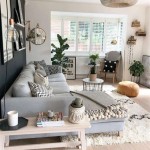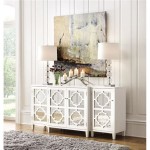Blue and White Decor Ideas: A Timeless Aesthetic
The combination of blue and white in interior decor presents a versatile and enduring aesthetic, capable of evoking feelings of serenity, sophistication, and even coastal charm. This pairing transcends trends, remaining a popular choice across diverse design styles, from classic to contemporary. Its adaptability stems from the wide range of blue shades available, each offering a distinct character when juxtaposed with the inherent brightness of white. This article explores various applications of blue and white decor, examining key design principles and practical implementation strategies.
Understanding the Psychology of Color
Before delving into specific decor ideas, it's crucial to understand the psychological impact of both blue and white. Blue is often associated with tranquility, stability, and trustworthiness. It can lower blood pressure and heart rate, creating a calming atmosphere. Different shades of blue, however, evoke different emotions. Lighter blues, like sky blue or powder blue, promote relaxation and openness, while darker blues, such as navy or indigo, convey a sense of power, sophistication, and formality. White, on the other hand, symbolizes purity, cleanliness, and spaciousness. It reflects light, making rooms appear larger and brighter. White also acts as a neutral canvas, allowing other colors, especially blue, to stand out and take center stage.
The interplay between these two colors creates a balanced and harmonious environment. The coolness of blue is offset by the brightness of white, preventing the space from feeling cold or sterile. By carefully considering the specific shades and proportions of blue and white used, designers can tailor the aesthetic to suit the desired mood and function of the room.
Achieving Balance and Harmony in Blue and White Interiors
The success of a blue and white decor scheme hinges on achieving a harmonious balance between the two colors. This involves careful consideration of color proportion, texture, and pattern.
Color Proportion: Determining the dominant color is a fundamental step. A primarily white room with blue accents will feel airy and spacious, while a room with a greater proportion of blue will feel cozier and more intimate. A common approach is to use white as the base color for walls, ceilings, and large furniture pieces, and then introduce blue through accent pieces such as cushions, rugs, artwork, and decorative objects. Alternatively, a feature wall painted in a striking shade of blue can serve as a focal point, adding depth and visual interest to the space.
Texture: Incorporating texture is essential to prevent a blue and white room from feeling flat or monotonous. This can be achieved through the use of various materials, such as linen, cotton, velvet, wood, and metal. For example, a white linen sofa adorned with blue velvet cushions creates a tactile contrast that adds visual richness. Similarly, a woven blue and white rug can add warmth and texture to a room with white walls and furniture. Introducing natural elements, such as woven baskets or driftwood accessories, can also enhance the overall aesthetic and create a sense of organic beauty.
Pattern: Patterns can add personality and visual interest to a blue and white decor scheme. Classic patterns, such as stripes, florals, and geometric designs, work particularly well. For a coastal theme, consider incorporating patterns inspired by nautical elements, such as anchors, shells, and waves. In a more traditional setting, Chinoiserie patterns, featuring intricate depictions of landscapes and figures, can add a touch of elegance and sophistication. When using patterns, it's important to maintain a sense of balance. Avoid overwhelming the space with too many competing patterns. A good rule of thumb is to choose one or two dominant patterns and then layer in smaller, more subtle patterns to complement them.
Specific Room Applications and Design Ideas
The versatility of blue and white allows for its effective implementation in various rooms throughout the home. Each room presents unique opportunities to tailor the color scheme to its specific function and purpose.
Living Room: In the living room, blue and white can create a welcoming and relaxing atmosphere. A white sofa can serve as the centerpiece, providing a neutral backdrop for blue cushions, throws, and artwork. A blue and white area rug can anchor the seating area and define the space. Walls can be painted in a soft, calming shade of blue or kept white for a more airy feel. Consider incorporating blue and white patterned curtains or blinds to add visual interest and control natural light. Bookshelves can be styled with a mix of blue and white decorative objects, such as vases, ceramics, and picture frames.
Bedroom: In the bedroom, blue and white can promote restful sleep and create a serene environment. A white duvet cover with blue accents, such as a quilt or throw pillows, can create a calming focal point on the bed. Blue and white striped or patterned curtains can block out light and add privacy. Walls can be painted in a soft, pastel blue or a crisp white. A blue and white bedside lamp can provide gentle illumination for reading and relaxation. Consider incorporating natural materials, such as a woven headboard or a wooden nightstand, to add warmth and texture to the space.
Bathroom: In the bathroom, blue and white can evoke a sense of cleanliness and freshness. White tiles can be used for the walls and floor, creating a bright and hygienic environment. Blue accents can be introduced through towels, bath mats, and shower curtains. A blue and white patterned wallpaper can add visual interest to a small bathroom. Consider incorporating blue and white storage containers, such as baskets or jars, to keep toiletries organized and accessible. A blue and white vanity can provide a stylish and functional focal point.
Kitchen: In the kitchen, blue and white can create a clean and inviting space for cooking and dining. White cabinets can provide ample storage and create a bright and airy feel. Blue accents can be introduced through backsplash tiles, kitchen accessories, and dishware. A blue and white striped or patterned rug can add warmth and personality to the floor. Consider incorporating blue and white pendant lights above the kitchen island or dining table. A blue and white kitchen island can provide extra counter space and storage. Open shelving can be styled with a mix of blue and white cookware and decorative objects.
Incorporating Different Shades of Blue
The vast spectrum of blue shades allows for a wide range of design possibilities within a blue and white decor scheme. Choosing the right shades of blue is crucial for achieving the desired aesthetic and creating the desired mood. Different shades of blue evoke different emotions and complement different styles.
Navy Blue: Navy blue is a classic and sophisticated shade that adds depth and formality to a space. It pairs well with crisp white and can be used to create a nautical or traditional aesthetic. Navy blue can be used for accent walls, furniture upholstery, or decorative accessories.
Sky Blue: Sky blue is a light and airy shade that promotes relaxation and openness. It pairs well with soft white and can be used to create a coastal or Scandinavian aesthetic. Sky blue can be used for walls, ceilings, or bedding.
Teal: Teal is a vibrant and refreshing shade that adds a touch of personality to a space. It pairs well with both white and other colors, such as gold or coral. Teal can be used for accent furniture, artwork, or textiles.
Powder Blue: Powder blue is a soft and delicate shade that evokes a sense of serenity and tranquility. It pairs well with creamy white and can be used to create a vintage or romantic aesthetic. Powder blue can be used for walls, furniture, or accessories.
Indigo: Indigo is a deep and rich shade that adds a touch of drama and sophistication to a space. It pairs well with both white and other colors, such as yellow or orange. Indigo can be used for accent walls, rugs, or upholstery.
By carefully considering the specific shades of blue used, designers can create a blue and white decor scheme that is both visually appealing and emotionally resonant. Experimentation with different shades and combinations is encouraged to achieve a truly unique and personalized aesthetic.

Blue And White Decor Ideas Thistlewood Farm

Stylist Challenge Blue And White Rooms

New Blue And White Living Room Updates Sand Sisal

Blue And White Decor Ideas For Your Home Thistlewood Farm

Fabulous Blue Living Room Ideas Decorating With Calm Accents Shabbyfufu Com

Blue And White Decorating Ideas 10 Ways To Decorate With

28 Dazzling Colors That Go With Navy Blue

Blue White Spring Living Room It All Started With Paint

Blue And White Decorating Ideas For A Timeless Look Perfecting Places

Spring Entryway Decor A Bright Chic Space







